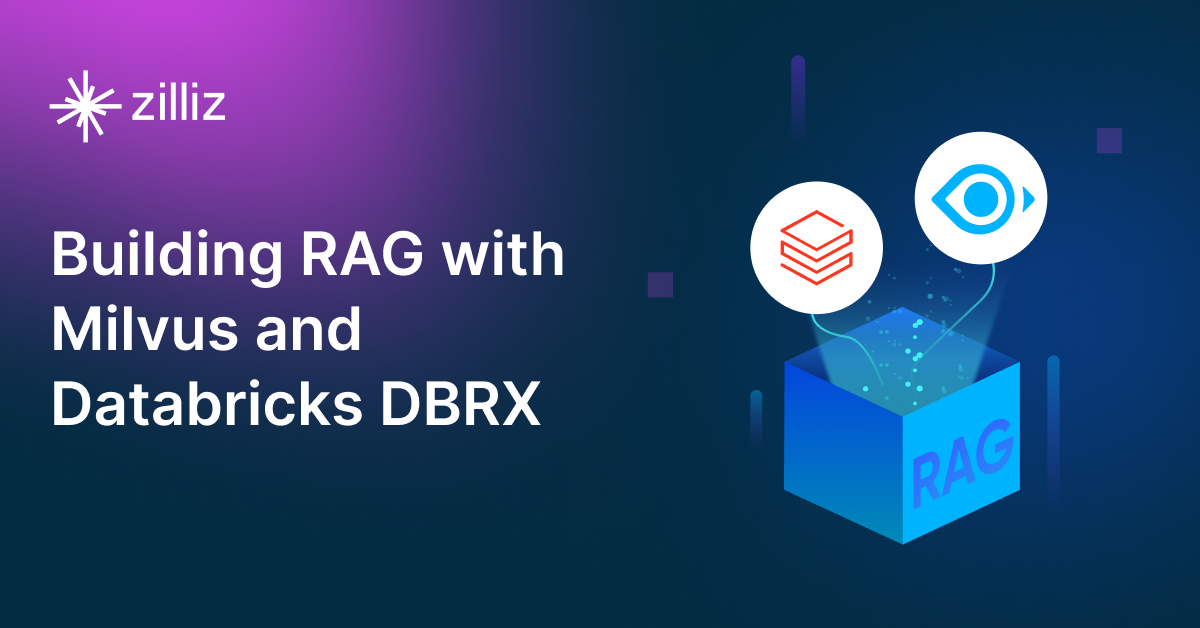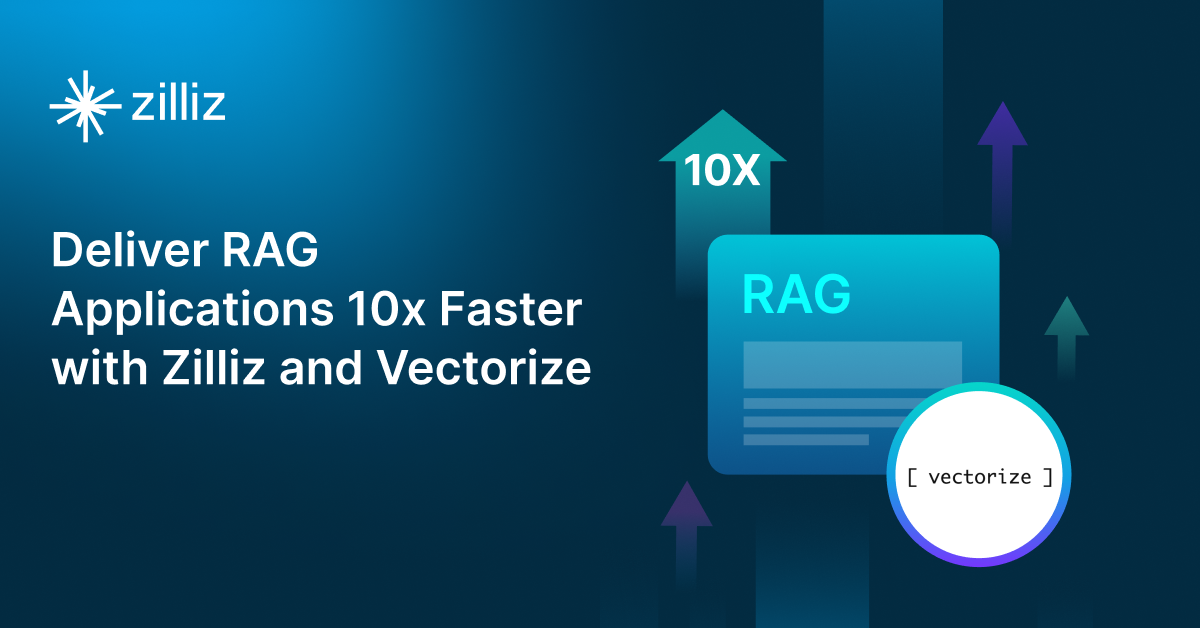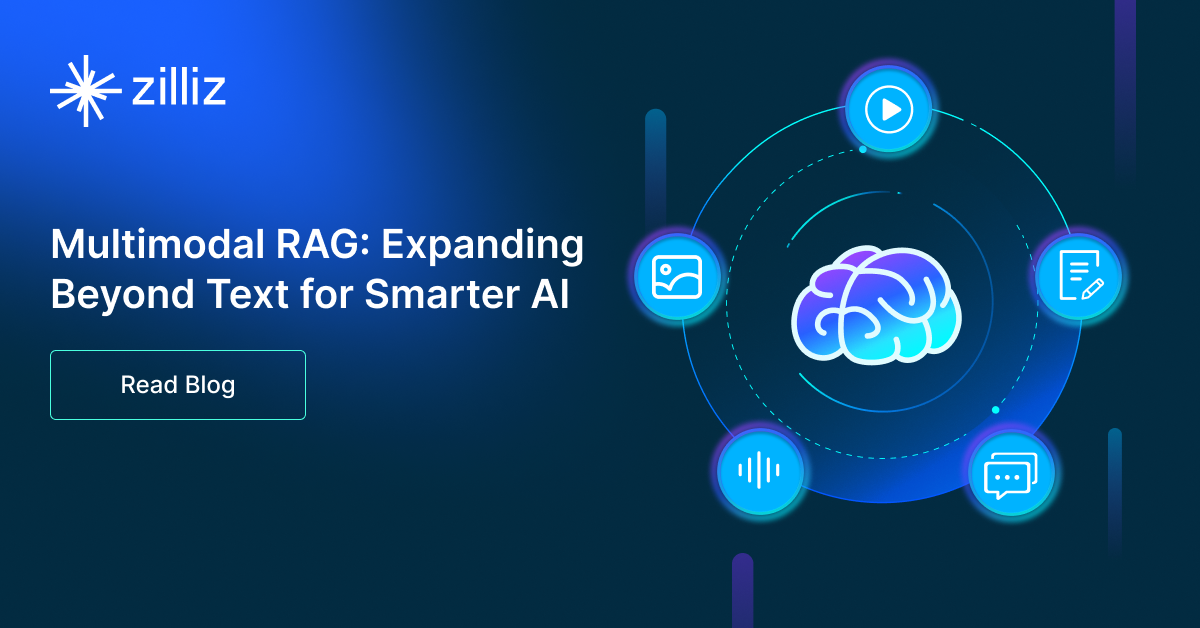Build RAG Chatbot with LangChain, LangChain vector store, Mistral AI Mistral Small, and Azure text-embedding-3-small
Introduction to RAG
Retrieval-Augmented Generation (RAG) is a game-changer for GenAI applications, especially in conversational AI. It combines the power of pre-trained large language models (LLMs) like OpenAI’s GPT with external knowledge sources stored in vector databases such as Milvus and Zilliz Cloud, allowing for more accurate, contextually relevant, and up-to-date response generation. A RAG pipeline usually consists of four basic components: a vector database, an embedding model, an LLM, and a framework.
Key Components We'll Use for This RAG Chatbot
This tutorial shows you how to build a simple RAG chatbot in Python using the following components:
- LangChain: An open-source framework that helps you orchestrate the interaction between LLMs, vector stores, embedding models, etc, making it easier to integrate a RAG pipeline.
- LangChain in-memory vector store: an in-memory, ephemeral vector store that stores embeddings in-memory and does an exact, linear search for the most similar embeddings. The default similarity metric is cosine similarity, but can be changed to any of the similarity metrics supported by ml-distance. It is intended for demos and does not yet support ids or deletion. (If you want a much more scalable solution for your apps or even enterprise projects, we recommend using Zilliz Cloud, which is a fully managed vector database service built on the open-source Milvusand offers a free tier supporting up to 1 million vectors.)
- Mistral AI Mistral Small: This lightweight transformer model offers competitive performance with a reduced memory footprint, making it suitable for resource-constrained environments. It excels in tasks like text generation and classification, providing efficiency without sacrificing quality. Ideal for applications needing quick responses and low latency, such as chatbots and real-time analytics.
- Azure text-embedding-3-small: This AI model specializes in generating dense vector representations of text inputs, facilitating semantic understanding and comparison. Its strengths lie in efficiency and scalability, making it ideal for applications such as text classification, information retrieval, and natural language processing tasks where rapid semantic similarity assessments are crucial.
By the end of this tutorial, you’ll have a functional chatbot capable of answering questions based on a custom knowledge base.
Note: Since we may use proprietary models in our tutorials, make sure you have the required API key beforehand.
Step 1: Install and Set Up LangChain
%pip install --quiet --upgrade langchain-text-splitters langchain-community langgraph
Step 2: Install and Set Up Mistral AI Mistral Small
pip install -qU "langchain[mistralai]"
import getpass
import os
if not os.environ.get("MISTRAL_API_KEY"):
os.environ["MISTRAL_API_KEY"] = getpass.getpass("Enter API key for Mistral AI: ")
from langchain.chat_models import init_chat_model
llm = init_chat_model("mistral-small-latest", model_provider="mistralai")
Step 3: Install and Set Up Azure text-embedding-3-small
pip install -qU langchain-openai
import getpass
import os
if not os.environ.get("AZURE_OPENAI_API_KEY"):
os.environ["AZURE_OPENAI_API_KEY"] = getpass.getpass("Enter API key for Azure: ")
from langchain_openai import AzureOpenAIEmbeddings
embeddings = AzureOpenAIEmbeddings(
azure_endpoint=os.environ["AZURE_OPENAI_ENDPOINT"],
azure_deployment=os.environ["AZURE_OPENAI_DEPLOYMENT_NAME"],
openai_api_version=os.environ["AZURE_OPENAI_API_VERSION"],
)
Step 4: Install and Set Up LangChain vector store
pip install -qU langchain-core
from langchain_core.vectorstores import InMemoryVectorStore
vector_store = InMemoryVectorStore(embeddings)
Step 5: Build a RAG Chatbot
Now that you’ve set up all components, let’s start to build a simple chatbot. We’ll use the Milvus introduction doc as a private knowledge base. You can replace it with your own dataset to customize your RAG chatbot.
import bs4
from langchain import hub
from langchain_community.document_loaders import WebBaseLoader
from langchain_core.documents import Document
from langchain_text_splitters import RecursiveCharacterTextSplitter
from langgraph.graph import START, StateGraph
from typing_extensions import List, TypedDict
# Load and chunk contents of the blog
loader = WebBaseLoader(
web_paths=("https://milvus.io/docs/overview.md",),
bs_kwargs=dict(
parse_only=bs4.SoupStrainer(
class_=("doc-style doc-post-content")
)
),
)
docs = loader.load()
text_splitter = RecursiveCharacterTextSplitter(chunk_size=1000, chunk_overlap=200)
all_splits = text_splitter.split_documents(docs)
# Index chunks
_ = vector_store.add_documents(documents=all_splits)
# Define prompt for question-answering
prompt = hub.pull("rlm/rag-prompt")
# Define state for application
class State(TypedDict):
question: str
context: List[Document]
answer: str
# Define application steps
def retrieve(state: State):
retrieved_docs = vector_store.similarity_search(state["question"])
return {"context": retrieved_docs}
def generate(state: State):
docs_content = "\n\n".join(doc.page_content for doc in state["context"])
messages = prompt.invoke({"question": state["question"], "context": docs_content})
response = llm.invoke(messages)
return {"answer": response.content}
# Compile application and test
graph_builder = StateGraph(State).add_sequence([retrieve, generate])
graph_builder.add_edge(START, "retrieve")
graph = graph_builder.compile()
Test the Chatbot
Yeah! You've built your own chatbot. Let's ask the chatbot a question.
response = graph.invoke({"question": "What data types does Milvus support?"})
print(response["answer"])
Example Output
Milvus supports various data types including sparse vectors, binary vectors, JSON, and arrays. Additionally, it handles common numerical and character types, making it versatile for different data modeling needs. This allows users to manage unstructured or multi-modal data efficiently.
Optimization Tips
As you build your RAG system, optimization is key to ensuring peak performance and efficiency. While setting up the components is an essential first step, fine-tuning each one will help you create a solution that works even better and scales seamlessly. In this section, we’ll share some practical tips for optimizing all these components, giving you the edge to build smarter, faster, and more responsive RAG applications.
LangChain optimization tips
To optimize LangChain, focus on minimizing redundant operations in your workflow by structuring your chains and agents efficiently. Use caching to avoid repeated computations, speeding up your system, and experiment with modular design to ensure that components like models or databases can be easily swapped out. This will provide both flexibility and efficiency, allowing you to quickly scale your system without unnecessary delays or complications.
LangChain in-memory vector store optimization tips
LangChain in-memory vector store is just an ephemeral vector store that stores embeddings in-memory and does an exact, linear search for the most similar embeddings. It has very limited features and is only intended for demos. If you plan to build a functional or even production-level solution, we recommend using Zilliz Cloud, which is a fully managed vector database service built on the open-source Milvus and offers a free tier supporting up to 1 million vectors.)
Mistral AI Mistral Small optimization tips
Mistral Small is a compact, efficient model best suited for low-latency and cost-effective RAG applications. Optimize token usage by ensuring retrieval pipelines return highly targeted and concise context, reducing unnecessary model computation. Use lightweight prompt compression techniques to streamline input formatting and avoid redundant details. Adjust temperature to 0.1–0.2 for factual consistency while keeping sampling techniques minimal to prevent response variability. For real-time applications, implement caching of common queries to further improve speed. If deploying at scale, leverage quantized versions of the model (e.g., 4-bit or 8-bit precision) to reduce memory footprint. Use batch inference techniques to maximize throughput while minimizing API call overhead.
Azure text-embedding-3-small optimization tips
To optimize the Azure text-embedding-3-small model for your Retrieval-Augmented Generation (RAG) setup, consider batching your input text to process multiple requests simultaneously, which can significantly enhance throughput. Use relevant keywords for fine-tuning the embeddings and ensure your text is preprocessed to remove noise, such as unnecessary punctuation or stop words. Experiment with different similarity metrics during retrieval, like cosine similarity, to improve result relevance. Leverage caching mechanisms to store frequently accessed embeddings, reducing response times. Finally, monitor and analyze performance metrics regularly for iterative improvements and adapt your approach based on user feedback to align the model more closely with your specific use case.
By implementing these tips across your components, you'll be able to enhance the performance and functionality of your RAG system, ensuring it’s optimized for both speed and accuracy. Keep testing, iterating, and refining your setup to stay ahead in the ever-evolving world of AI development.
RAG Cost Calculator: A Free Tool to Calculate Your Cost in Seconds
Estimating the cost of a Retrieval-Augmented Generation (RAG) pipeline involves analyzing expenses across vector storage, compute resources, and API usage. Key cost drivers include vector database queries, embedding generation, and LLM inference.
RAG Cost Calculator is a free tool that quickly estimates the cost of building a RAG pipeline, including chunking, embedding, vector storage/search, and LLM generation. It also helps you identify cost-saving opportunities and achieve up to 10x cost reduction on vector databases with the serverless option.
 Calculate your RAG cost
Calculate your RAG cost
What Have You Learned?
By diving into this tutorial, you’ve unlocked the power of combining cutting-edge tools to build a functional RAG system from scratch! You learned how LangChain acts as the glue, seamlessly connecting your pipeline’s components. With LangChain’s vector store, you saw how to store and retrieve embeddings efficiently, turning unstructured data into searchable knowledge. The Mistral Small LLM brought intelligence to the table, generating human-like responses by leveraging retrieved context, while Azure’s text-embedding-3-small model transformed text into rich numerical representations, ensuring your system understands semantic nuances. Together, these pieces form a dynamic pipeline that fetches relevant information, reasons over it, and delivers precise answers—a game-changer for chatbots, research tools, or any application needing context-aware AI!
But it doesn’t stop there! You also explored optimization tricks like chunking strategies and metadata filtering to boost speed and accuracy. Plus, the free RAG cost calculator gave you a practical way to balance performance and budget—a must for real-world projects. Now that you’ve seen how these tools harmonize, imagine what you can build next! Whether refining workflows, experimenting with models, or tackling entirely new use cases, you’re equipped to innovate. So fire up your IDE, tweak those parameters, and let your creativity run wild. The RAG ecosystem is yours to explore, optimize, and transform. Ready, set, build—your next breakthrough is just a few lines of code away! 🚀
Further Resources
🌟 In addition to this RAG tutorial, unleash your full potential with these incredible resources to level up your RAG skills.
- How to Build a Multimodal RAG | Documentation
- How to Enhance the Performance of Your RAG Pipeline
- Graph RAG with Milvus | Documentation
- How to Evaluate RAG Applications - Zilliz Learn
- Generative AI Resource Hub | Zilliz
We'd Love to Hear What You Think!
We’d love to hear your thoughts! 🌟 Leave your questions or comments below or join our vibrant Milvus Discord community to share your experiences, ask questions, or connect with thousands of AI enthusiasts. Your journey matters to us!
If you like this tutorial, show your support by giving our Milvus GitHub repo a star ⭐—it means the world to us and inspires us to keep creating! 💖
- Introduction to RAG
- Key Components We'll Use for This RAG Chatbot
- Step 1: Install and Set Up LangChain
- Step 2: Install and Set Up Mistral AI Mistral Small
- Step 3: Install and Set Up Azure text-embedding-3-small
- Step 4: Install and Set Up LangChain vector store
- Step 5: Build a RAG Chatbot
- Optimization Tips
- RAG Cost Calculator: A Free Tool to Calculate Your Cost in Seconds
- What Have You Learned?
- Further Resources
- We'd Love to Hear What You Think!
Content
Vector Database at Scale
Zilliz Cloud is a fully-managed vector database built for scale, perfect for your RAG apps.
Try Zilliz Cloud for Free


